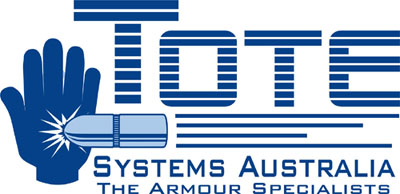What Threat Level?
During the 1970's, the U.S. Justice Department started to research and develop a standard for body armour performance.
After many changes and updates, a standard for body armour has emerged that is known as the N.I.J. (National Institute of Justice) standard 0101. The N.I.J. standard 0101.03 was implemented in 1987 and is the main standard used and recognised in Australia today. This standard covers many aspects of the design, manufacture and testing of ballistic body armour. This test standard coupled with our stringent quality controls, allows the wearer to have confidence that their body armour will perform to it's stated rating.
Note: N.I.J. 0101.04 was released in September 2000.
There are 6 main threat levels for ballistic body armour.
Level I, Level IIA, Level II and Level IIIA are all soft body armour. Level III and Level IV are hard plates, designed to defeat projectiles at rifle speeds and in most instances, must be used in conjunction with the soft body armour tested specifically for that combination.
The inclusion of a + after the threat level (i.e. IIIA+) indicates that the body armour was tested for an additional calibre as well as those specified in the N.I.J. standard for that threat level. The higher the threat level protection of body armour, the heavier and thicker the body armour becomes.
This has to be taken into consideration when selecting a body armour. Two of the major considerations when deciding on the level of protection required are: common threats to yourself and that the threat level you choose will defeat your own firearm.
Level I:
This level of protection is virtually obsolete due to the common use of higher velocity ammunition.
| Test Calibres: | 22 cal LR 40gr lead solid travelling between a speed of 1400fps and 1450fps. |
| 38 Special 158gr lead round nose travelling between a speed of 850 fps and 900fps. |
Level IIA:
This was one of the most common threat levels worn. With the development of newer and lighter weight materials, Level 2 or 3A body armour are now more appropriate. Level 2A offers protection against level 1 threats and other lower threats as well as low and medium velocity .9mm and 357 magnum. Calibres such as the .45ACP and .32ACP etc are all lower threats.
| Test Calibres: | 9mm 124gr full metal jacket (FMJ) travelling between a speed of 1090fps and 1140fps |
| 357 magnum 158gr jacketed soft point (JSP) travelling between a speed of 1250fps and 1300fps |
Level II:
This threat level body armour is usually worn as a covert style, but some organisations use it as overt body armour in conjunction with a hard plate. This threat level offers protection against the same projectiles as level 2A, but at higher velocities.
| Test Calibres: | 9mm 124gr full metal jacket (FMJ) travelling between a speed of 1175fps and 1225fps |
| 357 magnum 158gr jacketed soft point (JSP) travelling between a speed of 1395fps and 1445fps |
Level IIIA:
This is usually the highest threat level in soft body armour. It is usually worn as overt style armour because of the weight and thickness of the ballistic panels. However, with the decrease in weight of newer fabrics, it has become viable for covert use.
| Test Calibres: | 9mm 124gr full metal jacket (FMJ) travelling between a speed of 1400fps and 1450fps which is sub machine gun velocity |
| 44 magnum 240gr lead semi wad cutter travelling between a speed of 1400fps and 1450fps |
Level III:
This threat level is a hard plate style of armour and is used in conjunction with soft body armour to give protection against rifles. These plates are primarlily designed for use in overt style body armour but is generally not suitable to be worn in a covert style. This threat level is tested with six (6) impacts of the test calibre and as in level 4, generally relies on the soft body armour to provide some blunt trauma reduction. Some manufacturers produce plates that are stand alone and can be used without body armour.
| Test Calibres: | 7.62 x 51 FMJ (M80) travelling between a speed of 2750fps and 2800fps. |
Level IV:
This hard plate is designed to defeat Armour Piercing projectiles and is tested with a single impact of the test calibre.
| Test Calibre: | 30.06 M2AP 166gr (armour piercing) travelling between a speed of 2850fps and 2900fps. |
The test calibres specified in the N.I.J. standard represent common threats to the Law Enforcement and Security community, especially in the U.S.A.
Other countries may have very different threat levels to defeat. In Asia the 7.62 x 25 pistol using FMJ steel jacket or solid steel must be considered.
Fragmentation:
This threat is not part of the N.I.J. standard. Fragmentation body armour is not always designed to prevent penetration of bullets, but to capture jagged fragments of metal and shrapnel. This type of body armour is tested using the U.S. military standard 662F or NATO Stannag 2920 to determine the V50 rating.














